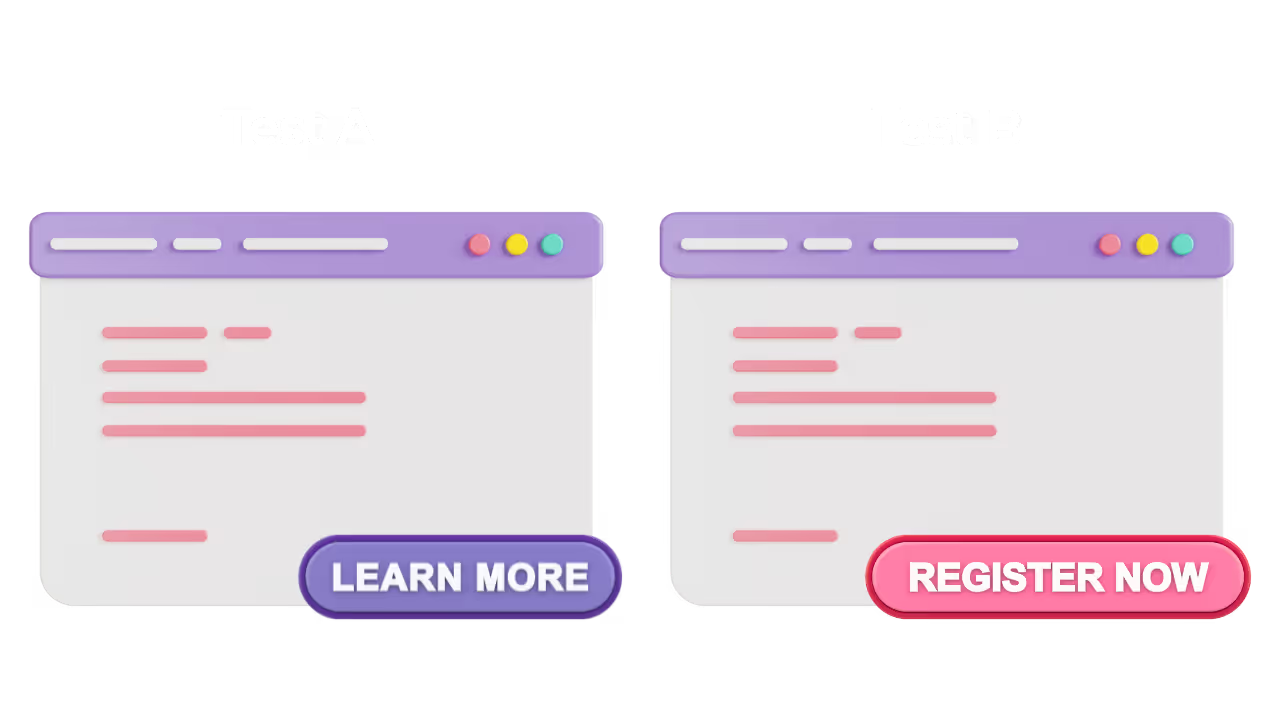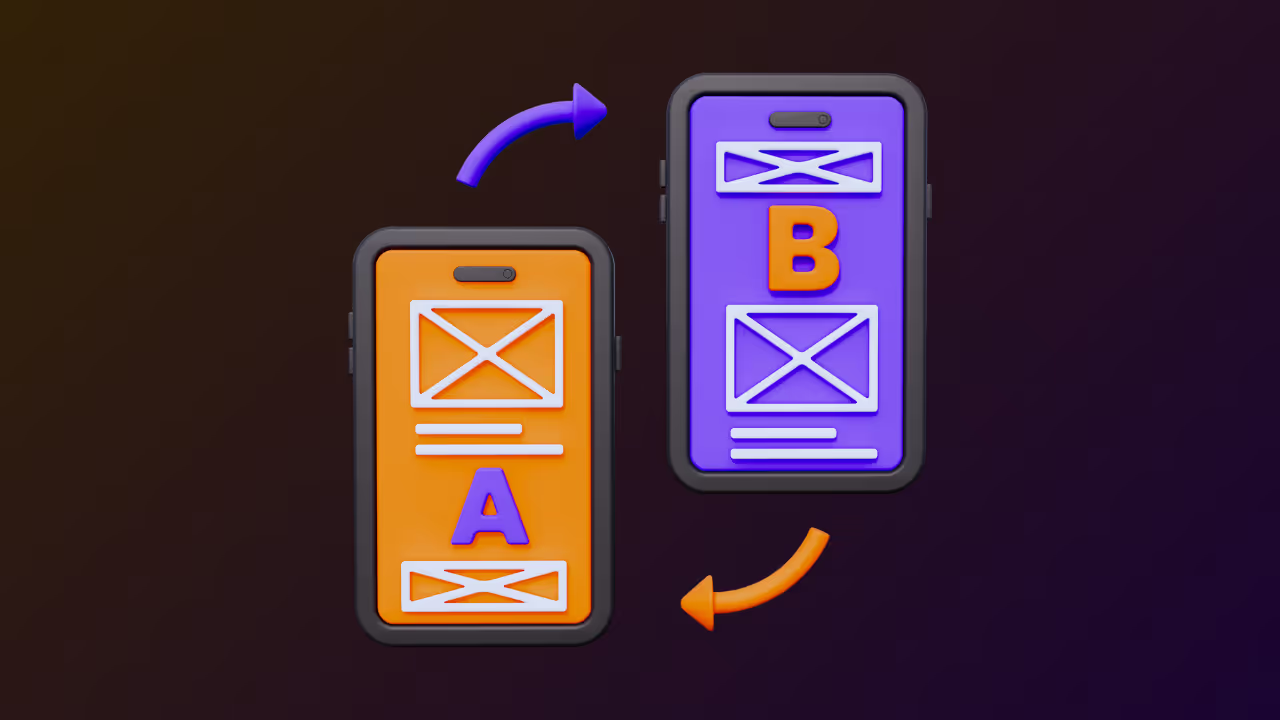In digital marketing, where every click, view, and conversion matters, the real difference between growth and stagnation often comes down to one thing: making decisions backed by data. The question is, how do you move past assumptions and start generating results you can actually predict and repeat? For many teams, the answer is A/B testing.
A/B testing, sometimes called split testing, is a structured way to compare two versions of a digital asset such as a landing page, subject line, or call-to-action button. One group of your audience sees Version A, another sees Version B, and you measure which version produces stronger results. Those results might be a higher click-through rate, fewer bounces, or a clear lift in conversions.
But A/B testing is not just about running a simple experiment. For marketers, content strategists, and SEO professionals, it’s a key skill that supports ongoing improvement. When done correctly, it creates a system for learning what really works. This guide walks through best practices and common mistakes so your team can run smarter tests and turn the results into insights you can act on.
The Foundation: Building a Strong Hypothesis
Before changing anything on your website, start with a clear, data-driven hypothesis. One of the biggest mistakes is jumping into a test with no real reasoning behind it, like saying, "Let’s just try a new headline." A better approach is to base your test on a measurable issue or a specific goal.
Weak hypothesis: “We think a different headline might get more clicks.”
Stronger, testable hypothesis: “Since our analytics show a high bounce rate on the current landing page, we believe a headline that highlights benefits (for example, 'Discover Your Financial Freedom' instead of 'Our Banking Services') will connect more effectively with our audience and increase conversions by at least 10%.”
A solid hypothesis gives your test structure, defines success, and ensures you gain insights regardless of the outcome. Instead of guessing, you’re running a focused experiment designed to teach you something useful about your audience and improve future results. Tools like Dataslayer make it easier to pull and organize data from different platforms, helping you build stronger, evidence-based hypotheses.
Best Practices for Running a Successful A/B Test
Once you’ve defined a solid hypothesis, the real challenge lies in running the test correctly. Use this checklist to make sure your experiments are both reliable and meaningful.
Isolate your variables
The foundation of A/B testing is changing one thing at a time. If you adjust the headline, CTA button, and hero image in a single test, you’ll never know which change drove the results. Instead, test the button color in one round, the headline in another, and the image in a third. That way, you can pinpoint the exact factor behind any improvement or drop in performance.
Aim for statistical significance, not just an early “win”
This is where many tests go wrong. Statistical significance means the difference between Version A and Version B is very unlikely to be random. It depends on both your sample size (how many conversions you’ve measured) and the confidence level you set, often 95%. Cutting a test short, sometimes called “peeking”, can give you misleading results. Even if one variation looks like a clear winner early, the data may not hold. Let the test run until your platform confirms significance.
Run tests at the same time
Timing matters. If you run Version A in January and Version B in February, outside factors like seasonality, holidays, or promotions can influence the results. To make sure your findings are valid, run both versions concurrently.
Be intentional about targeting and segmentation
Your test groups should be as similar as possible. For example, when testing an email subject line, the two groups should be randomly selected and evenly representative of your list. If you want to segment by age, purchase history, or location, build that into the test design from the start instead of treating it as an afterthought.
Prioritize high-impact elements
Not all changes are worth testing. Focus on elements that directly influence your KPIs, such as headlines, CTAs, and hero images. Testing minor details, like fine print at the bottom of the page, rarely moves the needle. Concentrate your efforts on high-traffic pages and conversion funnels where the impact will be greatest.

Common Pitfalls to Avoid in Your A/B Testing Strategy
Even experienced marketing teams can fall into traps that reduce the value of their A/B tests. Here are some of the most common mistakes to watch out for.
Stopping tests too early (“the peeking problem”)
It’s tempting to call a winner as soon as one variation pulls ahead, but that early lead could be a fluke. Ending a test before it reaches statistical significance is essentially cherry-picking data. Trust the process and let the test run until the numbers are reliable. Most testing platforms include calculators that help confirm when your results are valid.
Overlooking mobile performance
Since most traffic now comes from mobile devices, testing only on desktop is a costly oversight. Always check that your variation is responsive and delivers a smooth experience across screen sizes. A layout that looks great on a large monitor might be frustrating to use on a phone.
Changing too many variables at once
When multiple elements shift in a single test, it becomes impossible to know which change made the difference. Stick to sequential testing: try one variable, apply what works, then move to the next. This way you build a clear chain of evidence.
Running overlapping tests
If different teams are testing different elements on the same page at the same time, results can get muddled. For example, testing a new hero image while another group is experimenting with pop-up banners on the same page can skew the data. Make sure teams coordinate and keep track of all live experiments.
Failing to document results
A/B testing is a long-term learning process. Without records of your hypotheses, methods, and outcomes, you risk repeating the same tests or losing insights when team members change. Even a simple spreadsheet or shared project management board can serve as a valuable knowledge base.
Beyond the Test: What to Do with Your Results
An A/B test doesn’t end the moment you pick a winner. The real value lies in what you do with the results.
- Put the winner into action. If a variation clearly outperforms the original and the results are statistically significant, roll it out as your new baseline. This locks in the gains and gives you a stronger starting point for future tests.
- Learn from the “loser.” A variation that underperforms is not a wasted effort. It shows you what doesn’t resonate, which is just as important as knowing what does. Use those insights to sharpen your understanding of your audience and shape better hypotheses for your next round of testing.
- Build a culture of ongoing improvement. A/B testing works best when it’s part of your everyday digital strategy, not a one-time project. Encourage your team to challenge assumptions, explore new ideas, and let data guide decisions. Over time, this mindset creates a framework for steady, compounding growth.
At its core, A/B testing is more than a tactic. It’s a way of thinking that turns small, informed adjustments into smarter strategies and stronger results.
By documenting your learnings and using tools that centralize insights, like Dataslayer, your team can turn A/B testing into a consistent, scalable practice. Dataslayer can pull data from multiple sources, such as Google Analytics 4 (GA4), ad platforms, or CRM systems, into dashboards in Looker Studio or similar tools, giving you fast, reliable access to the information you need for deeper analysis and smarter reporting.
.avif)







